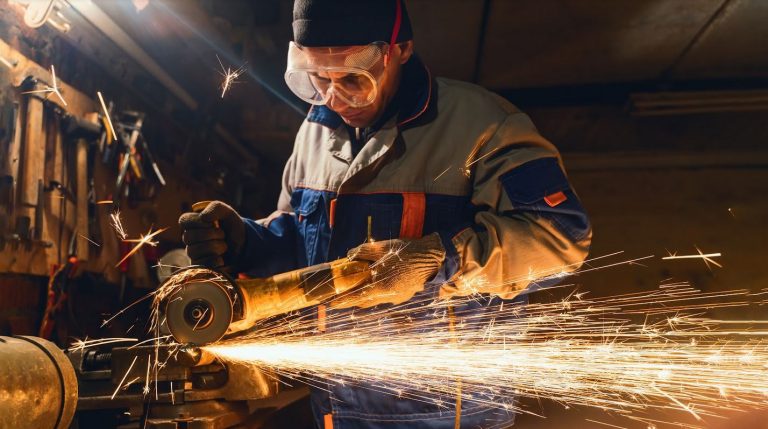Throughout the years, power tools have been essentials in home improvement projects and construction sites. The use of these tools is already common, and almost every household has several on hand. Sadly, it’s the reason why some individuals tend to overlook the potential hazards they pose. Almost every year, thousands end up in emergency rooms due to accidents involving power tools. In most cases, accidents can occur when using the tools incorrectly. Nevertheless, some end up with injuries by failing to use the appropriate safety gear. You can avoid potential injuries or errors by recognizing possible hazards and observing safety precautions. If you love to work with power tools or are eager to try out your first few devices, here are several safety precautions to follow at all times. 1. Learn How To Operate The Power Tools Depending on the power tools you’re going to invest in, they include instruction manuals. Always remember that incorrect use of any power tool can be dangerous with the potential to cause a life-threatening injury. Due to this, you should carefully read the manual before using one. The manual also provides you with information on improving safety while using the tool and troubleshooting any issues along the way. Learning everything about your device can significantly help in lowering the risk of injury. If you’re planning to add more tools to your collection, checking out sites like https://www.datapowertools.co.uk/ and others would greatly help. 2. Use Personal Protective Equipment Personal protective equipment should be your initial safety measure when working with power tools. Before handling any power tool, make sure that the appropriate personal protective equipment is readily on hand. If you don’t have protective equipment yet, it’s best to start with a pair of safety glasses to shield your eyes from dust, debris, shavings, and fibreglass. A pair of earplugs will also come in handy in protecting your ears. Remember that even if you have top-quality power tools, they can still produce noise that’s loud enough. Making sure that your hands are safe is also a priority. Wear a pair of gloves with the right fit. Choose a pair that shouldn’t hinder movement and disrupt dexterity. Additionally, if you’re working at heights or in areas with limited space, you need to invest in a durable safety helmet. 3. Wear The Proper Gear When operating power tools of any kind, wear the proper attire. Avoid wearing any loose-fitting clothes, neckties, or jewellery, and make sure to remove any dangling objects before working. Tie long hair behind your head so it won’t disrupt your vision. For proper footwear, use non-slip boots. 4. Inspect And Maintain Your Power Tools Regularly If you want your power tools to last and work efficiently for a long time, regular care and maintenance are necessary. Constant use of tools causes deterioration over time. With this in mind, you shouldn’t take any chances, even if you have brand new devices. A regular inspection is a key to staying safe. Whether you’re operating power tools in your home garage or construction sites, make it a priority to inspect your tools for any damage, cracks, exposed wiring, or broken plugs. 5. Switch Off Tools After Use Avoid leaving your tools plugged and in stand-by mode. It’s likely to result in severe issues for those who aren’t aware that the device is powered. The ideal way to avert accidents is to turn off tools after use. You should turn off, unplug, and store the tool properly after use. Once you unplug the device, keep it in its original box or container. If you have a work area at home, store your tools in a location that’s out of children’s reach. 6. Observe Safety When Operating Power Tools The majority of power tools utilize electricity, and most can hold tremendous power. A good example is a circular saw which allows you to finish projects more quickly. However, due to the power of this tool, it can be dangerous if you incorrectly use it. As for corded tools, avoid holding them by their cords. Make sure that the wiring is away from heat sources or sharp edges. In some instances, accidental starting might pose a threat. If you’re holding a plugged-in tool, don’t position your finger on the trigger. 7. Keep Your Work Area Tidy And Clean When your work area is in disarray, it’s likely to result in injuries. A hazardous environment can pose a significant risk to your safety. If you’re going to work with power tools, you need to keep the work area clean at all times. Get rid of any clutter. If the floor has rows of cords and wiring, it can put you at risk. Make sure to keep all your power tools away from any flammable substances. The work area in your home should be child-proof. Don’t forget to remove all master switches and starter keys along with padlocks if possible. 8. Provide Proper Lighting Aside from eliminating the clutter in your work area, adequate lighting is also essential. Some homeowners often overlook the importance of a well-lit working space. Always remember that working with power tools in a dimly lit area can be dangerous. When the light source in your work area isn’t bright enough, you should utilize extra lights. Conclusion Safety must always be the priority when operating power tools. Whether you’re a professional in a construction site or a beginner eager to work on do-it-yourself projects at home, these safety precautions should always be in mind to stay safe while efficiently using the tools.





